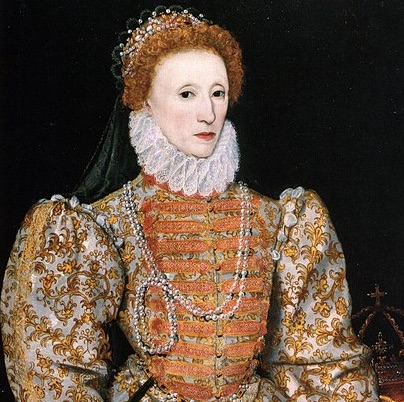
Queen Elizabeth I of England, was born on September 7, 1533, at Greenwich Palace in London, England, to King Henry VIII and his second wife, Anne Boleyn. She had a tumultuous childhood, as her mother was beheaded before Elizabeth reached her third birthday, and when her mother’s marriage to Henry was annulled, Elizabeth was declared illegitimate. However, her succession to the throne was restored by her father in 1543.
By the time she was 12 years old, Elizabeth, under the tutelage of William Grindal, had become fluent in English, Latin, Italian and French. Throughout her teenage years she read widely, translating into English the Latin and Greek classics. When Henry VIII died in 1547, Elizabeth’s younger half-brother Edward VI ruled until his death 6 years later. He was succeeded by Elizabeth’s half-sister Mary who later imprisoned her for almost a year on suspicion of supporting the Protestant rebels. After Mary’s death in 1558, Elizabeth was crowned Queen Elizabeth I of England at her coronation on November 17, 1558. Since she was only 25 years of age, Elizabeth used a council of trusted advisors to guide her in ruling her subjects.
One of Elizabeth’s early challenges was the religious turmoil in England. She established the Elizabethan Religious Settlement, which aimed to strike a balance between Catholic and Protestant practices. This led to the creation of the Church of England (Anglican Church).
In 1588, the Spanish Armada, a fleet of heavily armed ships, attacked England with the intention of defeating its navy and conquering the country. However, under the command of Sir Francis Drake and others, England’s navy, aided by strong tornadic winds, successfully repelled the Spanish invasion, cementing England’s naval supremacy.
During this expansionist era, Elizabeth sponsored explorers like Sir Walter Raleigh, who established Roanoke Island, the first English colony in the Americas. She also encouraged the voyages of exploration by figures such as Sir Francis Drake and Sir John Hawkins, contributing to England’s colonial ambitions.
Elizabeth’s reign is often referred to as the “Golden Age” of English literature and the arts. She supported playwrights like William Shakespeare and Christopher Marlowe, as well as other artists, leading to a flourishing of English culture. It was during her reign that the English Renaissance reached its zenith. Through her strong leadership and political acumen she was able to establish relative internal peace, despite the religious tensions during that era.
Queen Elizabeth I died on March 24, 1603, at Richmond Palace, at the age of 69, having reigned for almost 45 years. This span of time, known as the Elizabethan era, was marked by political stability, economic growth, artistic flourishing, and the expansion of English influence abroad. Elizabeth was succeeded by James VI of Scotland, who became James I of England, marking the end of the Tudor dynasty and the beginning of the Stuart dynasty.
